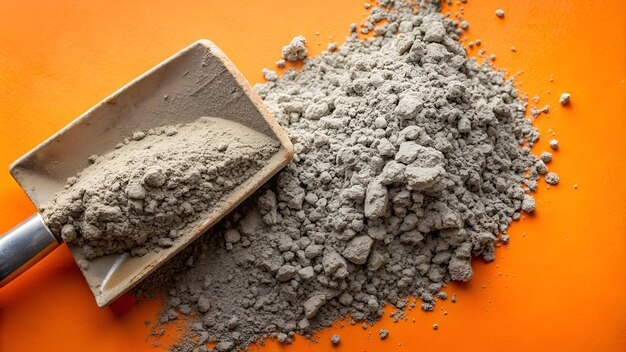Concrete is one of the construction industry materials that are needed in most constructions and is a very important part of constructions. All the cement names but two, namely Ordinary Portland Cement and Portland Pozzolana Cement are common in construction business. Even as they are seen to have been used with related application, the contents, functions and other benefits differ. The decision of which cement to use; OPC or PPC cement is imperative for any civil construction ranging from simple structures to houses or mansions. As a result, a direct comparison between OPC and PPC will make it easier to decide which will most appropriately suit a certain project. Now we have the general comparison of all the brands. let’s look at the specific aspects more and discover which one is best suitable for your project.
Key Differences Between OPC and PPC Cement
According to the physical and chemical characteristics, it can be seen that the usage and characteristics of OPC and PPC cement are dissimilarities to each other. Let’s explore these differences:
Ordinary Portland Cement (OPC)
Composition: OPC is made up of calcium silicates, Aluminates and ferrites. Because the hydraulic process is so fast, it develops a close-knit microstructure which leads to rapid strength gain.
Strength and Setting: OPC has higher initial strength because of quicker setting and thus is ideal for many projects where framework has to be removed as soon as possible and where time factor comes into play.
Grades: Analyses of OPC are OPC 33, OPC 43 and OPC 53 where number shows strength of cement after 28 days of concrete mixing in MPa.
Workability: OPC has reasonable workability; however, in many instances, OPC demands more water than PPC to provide adequate workability.
Chemical Resistance: In chemical resistance OPC is not very resistant to sulfate attacks as well as other chemical reactions hence not appropriate for chemically hostile situations.
Environmental Impact: Moreover, specific energy demands in the production of OPC are significantly higher as well as the overall environmental footprint.
Portland Pozzolana Cement (PPC)
Composition: Some materials added to PPC are OPC clinker blended with other materials such as fly ash, volcanic ash or micro silica, which has improved durability, and resistance to chemical attack.
Strength and Setting: Further, while PPC is gaining strength each day gradually, at the end of the curing period its final strength is even more or almost equal to OPC.
Grades: PPC is not normally rated, but its strength is expected to be equivalent to that of OPC 33.
Chemical Resistance: PPC has higher strength and resistivity to sulfate and chloride attacks than normal cement, and thus ideal for structures sited in areas near water or structures frequented with chemicals.
Environmental Impact: PPC is also environmentally friendly according to the use of industrial by-product hence relatively cheaper and carbon free.
Comparison Table: OPC vs PPC Cement
| Description | Ordinary Portland Cement (OPC) | Portland Pozzolana Cement (PPC) |
| Composition | Clinker, gypsum | OPC clinker + pozzolanic materials |
| Components | Calcium, silicates, aluminates, ferrites | Fly ash, volcanic ash, silica fumes |
| Setting Time | Initial: 30 mins, Final: ~10 hours | Initial: 30-60 mins, Final: up to 12 hours |
| Fineness | Higher fineness, faster initial strength | Lower fineness, higher final strength |
| Early Strength | High | Lower |
| Chemical Resistance | Lower resistance | High resistance |
| Cracking Resistance | More prone to cracking due to high heat of hydration | Lower heat of hydration, reduced cracking risk |
| Carbon Footprint | Higher | Lower |
| Cost | Higher | Lower |
| Durability | Less durable | More durable |
Comparison Table: OPC vs PPC Cement
OPC Cement Uses
High-Rise Buildings: That is why OPC is important in areas that demand fast construction.
Infrastructure: As a concrete used on roads; bridges and flyovers; OPC allows these structures to be used earlier because of its rapid hardening.
Precast Products: OPC is used in beams, columns, and slabs due to the loads they require to support.
Cold Weather Concreting: OPC has good workability at low temperatures unlike some of the cements which may take a very long time to set.
PPC Cement Uses
Mass Concrete Work: Because it has a lower heat of hydration PPC is ideal for projects like dams, retaining walls and sunken structures.
Marine Structures: Due to it’s high sulfate and chloride resistance, PPC is ideal for use in marine structures such as piers and docks.
Masonry and Plastering: Integrated system contributes an advanced characteristic to PPC in which improved finishing of walls, surfaces are achieved with less hassles.
Hydraulic Structures: Due to its excellent chemical resistance and durability PPC is widely utilized at canals, reservoirs and in the sewage treatment plants.
Conclusion
In making cement selections OPC and PPC, it is important to distinguish them to settle for the best that is required by the construction project. OPC undergoes the process of setting in the early stage and is appropriate for projects requiring high early strength within relatively a short time while PPC is durable and is most appropriate for projects requiring strength with in the later stages. It is recommended that before mixing concrete, house owners consult experts at Walls and Dreams who will guide on the type of cement to use to build a sustainable structure.
FAQs
How does OPC cement differ from PPC cement?
OPC has a shorter setting time and higher early age strength, whereas PPC provides a better degree of durability and chemical resistance.
Which is better for high-rise buildings: OPC vs PPC?
High early strength promoting a comparatively faster construction makes it mainly suitable for high-rise building structures, thus the use of OPC.
Which of the PPC OPC is more environmentally friendly?
Indeed PPC is more environmentally friendly since it utilizes by-products from the industries hence minimizing carbon footprint.
Is PPC better at withstanding chemical exposure than OPC?
Indeed PPC is more resistant to attack by sulfate and chloride and is thus recommended for use in marine and other chemically exposed structures.







